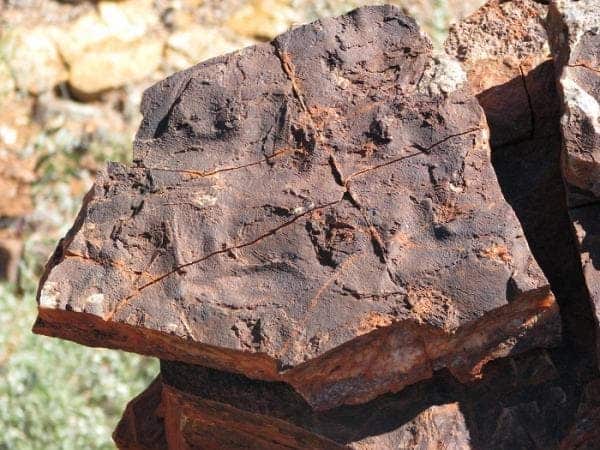To say that finding evidence of how life on Earth was 3.5 billion years ago is hard would be an understatement. Reconstructing the rise of life in its early stages is a monumental challenge – the evidence is only preserved in Earth’s oldest sedimentary rocks, and sedimentary rocks of that age are very hard to come by. However, a new study revealed the well preserved remnants of a complex ecosystem in a nearly 3.5 billion-year-old sedimentary rock sequence in Australia.

The study was conducted by a team which included Carnegie’s Nora Noffke, a visiting investigator, and Robert Hazen, a research scientist at the Carnegie Institution of Washington’s Geophysical Laboratory.
The Pilbara district of Western Australia is geologically speaking one of the most spectacular areas in the world. Scientists have described in detail deposits created by ancient photosynthetic bacteria, called stromatolites, and microfossils of bacteria – a very rare insight into that ancient world. However, one piece of the puzzle lacked from the Pilbara district: a phenomenon called microbially induced sedimentary structures, or MISS, had not previously been seen in this region. These structures are formed from mats of microbial material, much like mats seen today on stagnant waters, be they mainland or oceanic coastal lines. In other words, microbially induced sedimentary structures are primary sedimentary structures formed by the interaction of microbes with sediment and physical agents of erosion, deposition, and transportation.
But now, the team of geologists managed to locate this phenomenon in the old rocks, confirming their initial results with advanced chemical tests. The MISS was found in a formation called the Dresser Formation, and it strongly resembles a similar structure, dated 2.9 billion years ago.
“This work extends the geological record of MISS by almost 300 million years,” said Noffke, who is also a professor at ODU. “Complex mat-forming microbial communities likely existed almost 3.5 billion years ago.”
The team suggests that the bacterial mats were formed as a result of the interaction between the interactions of bacterial films with shoreline sediments from the region.
“The structures give a very clear signal on what the ancient conditions were, and what the bacteria composing the biofilms were able to do,” Noffke said.
Studying MISS is very important, because they are among the main targets for the Mars rovers. Thus, these results could have significant implications for studying life on other places in our solar system.
Journal Reference:
- Nora Noffke, Daniel Christian, David Wacey, Robert M. Hazen. Microbially Induced Sedimentary Structures Recording an Ancient Ecosystem in theca.3.48 Billion-Year-Old Dresser Formation, Pilbara, Western Australia.Astrobiology, 2013; 131108054848000 DOI:10.1089/ast.2013.1030
Was this helpful?



